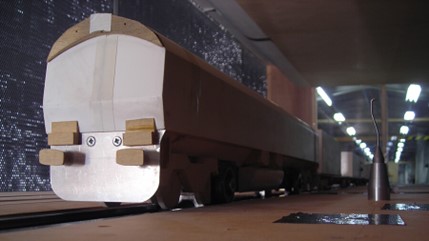
Dr David Soper Lecturer in Railway Aerodynamics at the University of Birmingham’s Railway Research and Education Centre talks about the safety, air quality, aerodynamics, fuel consumption and decarbonisation of rail freight.
Our work in the field of vehicle aerodynamics extends far beyond the traditional view of automotive aerodynamics and matters of car performance. We consider our research broadly in the overlapping themes of safety, decarbonisation and fuel consumption, air quality, and aerodynamic optimisation. The outcomes of which are currently supporting the development of a foundation of knowledge for transportation grand challenges, especially in the rail sector.

However, before moving onto rail, it is worth understanding the learning we can take from our research in other transportation modes, and the advent of connected and autonomous vehicles (CAV). With the arrival of advanced driver assistance systems (ADSA) and autonomous technologies, the possibility of multiple vehicles travelling in close proximity becomes a realisable opportunity to exploit potential fuel savings that can be obtained through a reduction in a vehicle’s aerodynamic drag whilst travelling in a wake of another vehicle. It is expected that early adopters of this technology are likely to be the haulage industry to support reduced operational costs. To that end we have been considering the aerodynamic interactions between Heavy Goods Vehicles (HGVs) in close-proximity, and the changes in aerodynamic forces as vehicles make typical on-road maneuvers. This research is vital to the safe introduction CAV technologies through enabling a proper aerodynamic assessment at the design phase, leading to the development of policies, standards, and safe working practices. An interesting finding from all this work is that a group of close-proximity HGVs act, aerodynamically, very much like a freight train, meaning results are applicable to rail conditions, as well as road, enabling us to learn more about the behavior of trains.

Extending this learning back to rail, we have been working closely with the rail freight industry on several projects closely linked to the theme of decarbonisation. These projects have taken a number of forms; whether that be industry led experimental testing at our unique moving model TRAIN rig facility to explore the aerodynamic efficiency of typical freight wagon configurations within a train formation, searching for opportunities to optimise new wagon designs; through the development and application of numerical models and computational fluid dynamics simulations to consider how freight trains create complex pressure waves when passing through tunnels; or RSSB funded deep analysis of the industry aerodynamic barriers to unlocking ‘superfast’ freight services and enabling freight trains to travel at speeds above the traditional 75 mph limit. It really is an exciting time for rail freight research and the opportunities that can arise through research and development outcomes. The findings from our research will allow rail freight services to fit in more seamlessly between passenger services, introducing a step-change in freight operation, performance and opening new rail freight markets. This in turn will support optimisation of typical freight paths, leading to a reduction in fuel consumption, improved air quality and support rail decarbonisation.
To find out more about our research, details on aerodynamics at BCRRE and the TRAIN rig moving model facility, contact David.
Check out our website at: www.birmingham.ac.uk/raildecarbonisation
